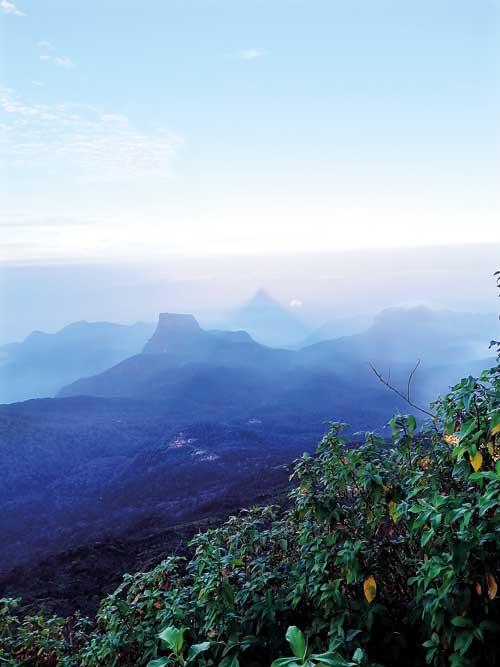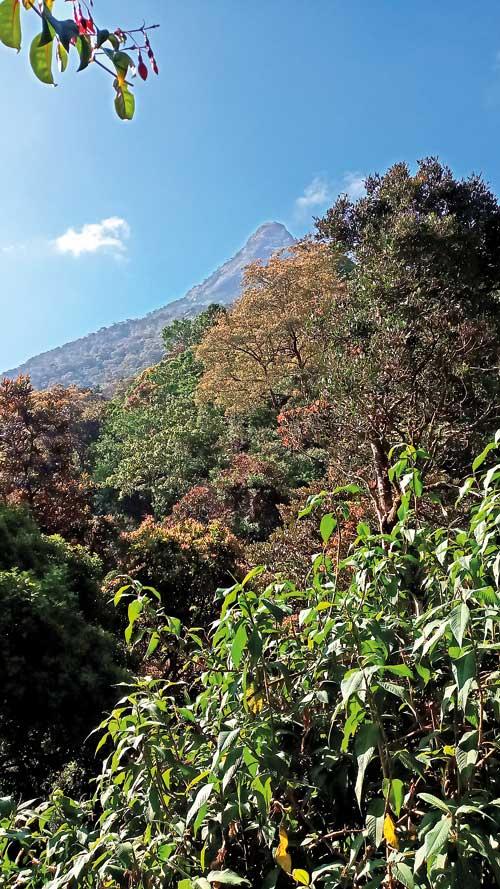Reply To:
Name - Reply Comment
When they weren’t climbing mountains or conversing with kings, the earliest foreign writers on Sri Lanka were dwelling on gems, rubies, topazes, sapphires, and  moonstones. From Pliny and Cosmas to Fa Hsien, Odoric of Pordenone, de Marignolli, Friar Hethoun, Marco Polo, Ibn Batuta, and de Castanheda, it was all rubies and gems: Fa Hsien saw a Buddha image “in green jade more than 20 cubits high”, “a great ruby” that shone “like a bright star at night” which Marco Polo described as “a span long and as thick as a man’s arms.”
moonstones. From Pliny and Cosmas to Fa Hsien, Odoric of Pordenone, de Marignolli, Friar Hethoun, Marco Polo, Ibn Batuta, and de Castanheda, it was all rubies and gems: Fa Hsien saw a Buddha image “in green jade more than 20 cubits high”, “a great ruby” that shone “like a bright star at night” which Marco Polo described as “a span long and as thick as a man’s arms.”
Polo, a merchant who had served at the court of Kublai Khan, later wrote of ambassadors being sent by that emperor to the king of “Zeitan” who requested him to yield this ruby in return for “the value of a city.” The king politely refused, informing them that it was “a jewel handed to him by his predecessors.” The emissaries had to return empty-handed.
Sri Pada was the peak of gem country, and many of those travellers who made their way up there, believing it to be the site of paradise, surveyed the land below it. “The bottom is full of precious stones,” Odoric wrote, while Ibn Batuta noted that “gems are met with in all the localities.” Both Odoric and Batuta believed that Adam found redemption at its foot, and this most probably led them to make fantastic pronouncements on it: for Odoric, “an exceedingly great mountain”, and for Batuta, “the mountain of Serendib than which the whole world does not contain a mountain of greater height.” Roland Raven-Heart was blunt: “it is not even the highest in Ceylon.” Still, claims continued to be made: in 1782 Pierre Sonnerat thought it to be “the highest in Asia.” Being a naturalist, he should have known better.
The land around the peak was known as Sabaragamuwa or Habaragamuwa, possibly because of its association with the veddahs: the Mahavamsa tells us that after Kuveni had been forced to flee both Vijaya’s settlements and her own clan with her two children, they came to settle at Sumanakuta. Sabara or “Habara” which literally means “the barbarian”, and the area was called “the land of the barbarians.” But Vijaya’s settlements expanded, civilisation made its way to the hilly regions, and the veddahs moved away to Bintenna and Vellassa, with some of them finding a home further up north in the Vanniya, falling under the rule of the Jaffna kingdom yet pledging their allegiance to the king of Kandy at around the time of the British conquest. Eventually, Sabaragamuwa found itself lodged between two regions: to the south of the Peak, Ruhunurata, and to the north, everything else: “on the northwest the kingdom of Ceylon, and on all other sides the ocean.” One of the earliest references to the Peak calls it Al-Rohoun; an Arab merchant named Soleyman used it when he climbed it in 851 CE.
Although Sinhala Buddhist tradition agrees on Vattagamini Abhaya being the founder of the Footprint of the Buddha and having initiated a cult of worship around it, the earliest historical evidence for that cult comes to us from inscriptions during the reign of Vijayabahu I; it is said that this king dedicated a village called Gilimaya for the benefit of the pilgrims. Later rulers who the Chronicles refer to as travellers, devotees, or patrons of the Peak included Nissanka Malla, Parakramabahu II, Vijayabahu IV, Vikramabahu (the de facto founder of the udarata kingdom), Rajasinghe I, Wimaladharmasuriya II, Narendrasinghe, Sri Vijaya Rajasinghe, and Kirti Sri Rajasinghe. While Marco Polo, de Marignolli, Ribeiro, and Queyroz did write on the Peak, the first European recorded to have climbed it was a German soldier in the Dutch East India Company by the name of Daniel Pathey, in 1684.
 Since we have no written evidence prior to the reign of Vattagamini Abhaya or Vijayabahu I, we have to rely on folklore and oral accounts. The Ravana link is particularly intriguing, as is the Mahavamsa’s reference to the Buddha’s three visits, the third of which took him to the summit. Followers of Mahayanism, especially in India and China, believed in the 7th and 8th centuries AD that the Buddha delivered a discourse, the Lankavatara Sutra, to the chief of the raksas, Ravana.Paranavitana (1958) argues that Lankavatara was another name for Sri Pada, or “the summit of the mountain in the ocean at Lankapura.” By contrast, the Theravada chroniclers do not touch on the mountain like that, and the Dipavamsa, the predecessor to the Mahavamsa which dwells at length on the Buddha’s visits, doesn’t mention the god Sumana-saman. This, however, did not stem the tide of speculation, and over the decades scholarship concluded to varying degrees that the mountain played a rather pivotal role in the Ramayana; two Sanskrit plays, Rajasekhara’s Balaramayana and Murari’s Anargha-raghava, have Rama allude to it as the victors are returning to Ayodhya.
Since we have no written evidence prior to the reign of Vattagamini Abhaya or Vijayabahu I, we have to rely on folklore and oral accounts. The Ravana link is particularly intriguing, as is the Mahavamsa’s reference to the Buddha’s three visits, the third of which took him to the summit. Followers of Mahayanism, especially in India and China, believed in the 7th and 8th centuries AD that the Buddha delivered a discourse, the Lankavatara Sutra, to the chief of the raksas, Ravana.Paranavitana (1958) argues that Lankavatara was another name for Sri Pada, or “the summit of the mountain in the ocean at Lankapura.” By contrast, the Theravada chroniclers do not touch on the mountain like that, and the Dipavamsa, the predecessor to the Mahavamsa which dwells at length on the Buddha’s visits, doesn’t mention the god Sumana-saman. This, however, did not stem the tide of speculation, and over the decades scholarship concluded to varying degrees that the mountain played a rather pivotal role in the Ramayana; two Sanskrit plays, Rajasekhara’s Balaramayana and Murari’s Anargha-raghava, have Rama allude to it as the victors are returning to Ayodhya.
"Sri Pada was the peak of gem country, and many of those travellers who made their way up there, believing it to be the site of paradise"
 If Ravana, the chief of the raksas, and Vibishana after him, did rule from Sri Pada – points on which there is no historical consensus, barring the findings of the late Mirando Obeyesekere which were all, ultimately, based on the slim, slender evidence of certain ola inscriptions that have as of yet found no favour with historians and archaeologists – it certainly makes sense, as Senerath Paranavitana believed at the time, that the Peak was the abode of Yama-raja and that the Sumana-saman of Sinhala Buddhist mythology had been Yama prior to the establishment of the primacy of Theravada Buddhism. Saman, according to Paranavitana, was a “colleague” of Varuna, a Hindu god whose cult was established in India at the time of the first settlement of the Sinhalese in Sri Lanka, and the name Samantukuta (“Saman’s abode”) didn’t gain traction until the seventh century, by which time Sinhala Buddhist mythology had consecrated Saman as a Sinhala Buddhist god; the Nikaya Sangrahaya, a 14th century work, places him as one of the four guardians of the island, alongside Vishnu,Vibishana, and Skanda.
If Ravana, the chief of the raksas, and Vibishana after him, did rule from Sri Pada – points on which there is no historical consensus, barring the findings of the late Mirando Obeyesekere which were all, ultimately, based on the slim, slender evidence of certain ola inscriptions that have as of yet found no favour with historians and archaeologists – it certainly makes sense, as Senerath Paranavitana believed at the time, that the Peak was the abode of Yama-raja and that the Sumana-saman of Sinhala Buddhist mythology had been Yama prior to the establishment of the primacy of Theravada Buddhism. Saman, according to Paranavitana, was a “colleague” of Varuna, a Hindu god whose cult was established in India at the time of the first settlement of the Sinhalese in Sri Lanka, and the name Samantukuta (“Saman’s abode”) didn’t gain traction until the seventh century, by which time Sinhala Buddhist mythology had consecrated Saman as a Sinhala Buddhist god; the Nikaya Sangrahaya, a 14th century work, places him as one of the four guardians of the island, alongside Vishnu,Vibishana, and Skanda.
The similarities between Vattagamini Abhaya’s and Maudgalyana’s stories aren’t apparent at first glance, but they are there in two episodes which, while only lightly touched upon by the Pali Chroniclers, are pointed out by Paranavitana as evidence for their Yama-raja pretensions. In the Culavamsa Maudgalyana, at the thought that dignitaries “have attached themselves to my father’s murderer”, gnashes his teeth and puts those officials to death. In the Mahavamsa, Vattagamini Abhaya, enraged that a dignitary neglects to prostrate before him, kills him and thus alienates the ministers, who are advised by a Buddhist monk to repose their trust in the king. Now these are only sketchily referred to in the Chronicles, but in Paranavitana’s reading of them they point at a megalomaniac desire to attain a divine status among the kings of the time, only barely recorded by the pro-Theravada, pro-Mahavihara chroniclers.
It’s not a little surprising that while he explored the Saman as Yama thesis, Paranavitana was not as willing to explore the historicity of Sri Pada as a key part of the Ramayana and as the abode of the chief of the raksas,Ravana, a discrepancy which Mirando Obeysekere attributed to the archaeologist’s reluctance to explore the Ravana legend. More fantastic than Saman as Yama and Sri Pada as Ravana’s abode, however, is the contention that Alexander the Great, whom narratives state could not go beyond the lower Indus Valley in his Indian campaigns, climbed the mountain during the reign of Pandukabhaya.
Two pieces of evidence are marshalled in support of this theory: a grotto at the foot of the mountain with the name “Iskander” inscribed on it that Ibn Batuta came across and wrote on, and various references to the island and peak in the writings of Ashraff, a Persian poet. The only other reference to Alexander travelling to the island comes from Pascal-François-Joseph Gossellin, a French historian who wrote on Onesicritus, the pilot of Alexander’s fleet, visiting Taprobane.Onesicritus does mention Taprobane, but as Vinod Moonesinghe told me, nothing shows that he visited it, or that Alexander ascended the Peak on his horse Bucephalus. As for Ashraff and his work Zaffer Namah Skendari – where he dwells on the visit – “his story is too fabulous.” In reality, Alexander sent his naval chief Nearchus to explore the coast from the Indus to Mesopotaemia, making it unlikely that he’d landed at Sri Lanka as Gosselin claimed. D. P. M. Weerakkody questioned the accuracy of Gosselin’s thesis; his critique of it – it is likely that Onesicritus was talking of Taprobane, not of travelling there – lays to rest the view that Alexander may have sailed across the Indian Ocean, much less come to Sri Lanka, even less climbed a mountain many wrote of, and many, many more climbed.
Pics by Dhananjaya Samarakoon